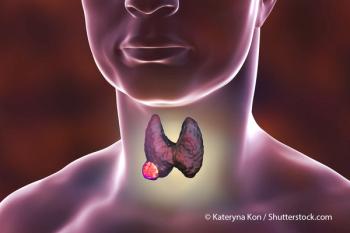
Is NIFTP Truly a Non–Thyroid Cancer Diagnosis?
According to the American Thyroid Association guidelines, noninvasive follicular thyroid neoplasm with papillary-like features is benign.
Noninvasive follicular thyroid neoplasm with papillary-like features (NIFTPs), which are considered benign lesions according to the current American Thyroid Association guidelines, account for about 16.8% of well-differentiated thyroid cancers (WDTCs) in Ontario, Canada, according to a recent study
“What was concerning in this study is that 10% of the NIFTPs had recurrence, which contradicts the notion that the NIFTPs are benign,”
In this population-based, retrospective cohort study, the researchers reclassified 318 of 725 follicular variant papillary thyroid cancer (FVPTC) cases as potential NIFTP (NIFTPs were previously identified as a subset of FVPTC). The median follow-up time was 15.3 years for the entire cohort and 15.9 years for those alive at the last follow-up visit. Disease failure occurred in 79 FVPTC patients (19.4%) and 30 NIFTP patients (9.4%) (P < .01). This finding held during multivariable analysis; FVPTC demonstrated significantly worse disease-free survival (DFS) compared with NIFTP (hazard ratio [HR], 1.84; 95% CI, 1.17–2.89).
All patients who received definitive surgery for WDTC in Ontario between 1990 and 2001 who were followed until 2014 were included in the study. The investigators used a conservative decision rule to subtype select FVPTCs into NIFTPs following pathology report review. A slide review was not performed.
Of note, the results of this study defy earlier research in 2016, the results of which originally supported changing the nomenclature of a subset of FVPTC to NIFTP. These previous researchers found that NIFTP was benign in a cohort of 109 patients, with no recurrence. Notably, subsequent studies have found that the recurrence rate of NIFTP was higher than zero and advised against de-escalation of treatment and loss of follow-up.
Umbricht cautions that the study methodology may have overestimated the incidence of NIFTP, as well as its recurrence rate. No histological sections were reanalyzed, and the review was limited to the old archival pathology reports that were written long before NIFTP was defined as a distinct diagnostic entity, he said.
The histological details on which this distinction is made today may or may not have been mentioned in the reports, leaving it to the study team to interpret them as best they could. “It’s quite possible that some of the cases that were called NIFTP would be classified as FVPTC on review of the histological tissue sections, and if so, they presumably would be the ‘NIFTP cases’ most likely to recur,” Umbricht noted.
“This is probably the first of many papers that will be used to reassess the value and impact of molecular testing of thyroid tumors,” said Umbricht. “The entire industry depends on studies performed before this new entity of NIFTP was established, and has been justifying the [high] cost of these tests on the fact that they can distinguish benign from malignant tumors. This is now all up in the air until the impact of NIFPT reclassification is assessed.”
Newsletter
Stay up to date on recent advances in the multidisciplinary approach to cancer.


















































































